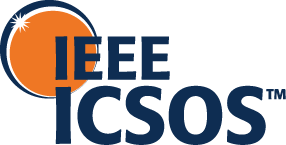All Presentations will be live during the conference (please make this bold). We ask that all authors provide a video presentation and upload via EDAS for the proceedings and will be used only as a back-up format if there are any technical difficulties.
Video Presentation Instructions for Authors:
All presentation videos will be uploaded to your EDAS paper profile. The author assigned as the “Presenter” will receive an email directly from EDAS with the specific instructions below on recommendations for video presentation formatting.
- Please prepare a video presentation: ONLY MP4 videos will be accepted
- 20 minute video presentation and 5 minutes for Q & A
- Please make sure that you stick to the maximum video lengths. Longer videos will be rejected during upload via EDAS, and will be prompted to prepare a new version.
- Videos should be prepared in either 720p or 1080p HD and use an MP4 video format with H.264 (or optionally H.265) codec. SD videos do not provide sufficient resolution to see details on slides. Please do not prepare 4K or 60fps videos as they consume unnecessary bandwidth. Please do not use other video codecs that might not work on participants’ computers. The bitrate should not exceed 1 Mbps to avoid video files becoming too large. When recording your video, the most important aspect is to provide quality audio. We recommend producing your recording in a noise and echo-free environment. We also recommend a dedicated microphone close to your mouth, but not directly in front of your mouth to avoid pop sounds for the recording. An alternative to a microphone is the microphone from a smartphone headset. If you record a video of yourself presenting, please also make sure you have proper lighting. Please review your recording carefully before final submission.
- There are alternative applications for recording your presentations They are user friendly and free-to-use tools, we particularly recommend:
The Open Broadcasting Studio
Auphonic – can be used to give your audio a final polish
Handbrake – provides good results when you need to convert your videos to MP4
DaVinci Resolve – for a video editing software that has a free version
Apple and Windows computers also come with free video editing software (iMovie or Windows Movie Maker)
Deadline for Presentations: 23 March 2022 EOD EST


